The final stage of the Schoolchildren Olympiad “Step into the Future. Department of Ecology and Industrial Safety Olympics step into the future official
All-Russian Forum of Scientific Youth “Step into the Future”
PLAN OF THE MAIN EVENTS OF THE FORUM
The organizers reserve the right to make changes to this program
The Olympics will be held on a separate schedule. Additional information will be posted on the Step into the Future program website in January 2019
| March 17, Sunday | |
|---|---|
| 10.00-18.00 | Arrival and registration of forum participants; arrival and settlement of non-resident participants (independent settlement) |
| 12.00-17.00 | Rehearsal presentations by regional delegations for the Opening Ceremony |
| 10.00-18.00 | Science exhibition. Setting the Exposure |
| 17.00-18.00 | Organizational meeting heads of delegations and accompanying persons with the participation of representatives of the organizers |
| March 18, Monday | |
| 11.00-12.30 | The opening ceremony. Greetings from delegations and organizers, presentation of scholarships from the “Step into the Future” program |
| 12.30-14.00 | Science Exhibition. The exhibition is visited by representatives of the press and guests. The jury interviews the exhibition participants |
| 13.30-15.00 | Time for lunch |
| 16.00-18.00 | Plenary sessions of symposiums. Leading Russian scientists give presentations on current problems modern science and technology (according to the symposium schedule) |
| March 19, Tuesday | |
| 09.00-13.00 | Scientific Conference |
| 13.00-14.00 | Jury meeting at the conference sections: discussion of the work, summing up the preliminary results of the sections' work |
| 13.00-14.00 | Time for lunch |
| 14.00-16.00 | Excursion to the Science Museum MSTU named after N.E. Bauman (by appointment) |
| 14.00-17.00 | Science Exhibition |
| 15.00-19.00 | Intellectual competition on technology for the development of memory and logic (team competition) in the computer room |
| 17.00-18.00 | Jury meeting scientific exhibition: discussion of works, summing up preliminary results |
| March 20, Wednesday | |
| 09.00-13.00 | Scientific Conference. Work of scientific sections of the conference. Participants' reports (according to the section schedule) |
| 13.30-14.30 | Time for lunch |
| 13.00-15.00 | Jury meeting at the conference sections: discussion of the work, summing up the work of the sections |
| 14.00-17.00 | Science Exhibition. The jury interviews participants, visiting the exhibition |
| 15.30-19.30 | Intellectual competition on technology for the development of memory and logic (individual test) |
| 17.00-18.00 | Dismantling of exhibition stands |
| 17.30-19.30 | Meeting of the Expert Council of the “Step into the Future” program, the jury of the scientific exhibition and representatives of the jury of the conference sections: summing up the results of the forum |
| March 21, Thursday | |
| 09.00-13.00 | Olympiads for forum participants |
| 11.00-13.00 | Session of the Central Council program “Step into the Future” with the participation of members of the Central Council, leaders regional branches RMPO and heads of delegations |
| 13.30-14.30 | Time for lunch |
| 15.00-18.00 | National Festival of Young Fashion Designers and Designers. Demonstration of clothing models on the catwalk of the Institute of Arts |
| 16.00-17.30 | Scientific Conference. Summing up the work of the sections, presenting certificates and diplomas to participants (according to the section schedule) |
| March 22, Friday | |
| 11.00-12.30 | Analysis of Olympiad tasks |
| 12.00-13.00 | Excursion to the Museum of Science of MSTU named after. N.E. Bauman (by appointment) |
| 14.00-15.00 | Presentation to forum participants recommendations for international youth scientific events and special exhibition diplomas |
| 15.00-17.00 | Award ceremony forum laureates |
| 17.30-18.00 | Consultations laureates recommended for the Russian National Delegations to international scientific events |
| March 23, 24, Saturday, Sunday | |
| Departure of nonresident forum participants | |
By the decision of the Organizing Committee of the Schoolchildren Olympiad “Step into the Future”, the results of the qualifying stage of the Schoolchildren Olympiad “Step into the Future” were summed up:
- academic competition in general education subjects “Mathematics”, “Physics”, “Informatics”.
Scientific and educational competition in a set of subjects “Engineering” (general education subjects physics, computer science).
Academic competition
Scientific and educational competition (Olympiad for schoolchildren “Step into the Future, Moscow” and “Step into the Future, Cosmonautics”)
CONGRATULATIONS TO THE WINNERS AND PRIZES OF THE qualifying stage of the Olympics and invite them to take part in the final stages of the Olympics, which will take place from February 1 to March 31, 2018 according to the following schedule:
ACADEMIC COMPETITION
|
for schoolchildren in grades 8-10 Address: Rubtsovskaya embankment, building 2/18, Educational and Laboratory Building of MSTU named after. N.E. Bauman Registration of participants on the day of the Olympics: 09.00 hours Start of all Olympics: 10.00 o'clock |
|
Olympiad for schoolchildren “Step into the Future” in general education subjects for schoolchildren of 11th grade Address: 2nd Baumanskaya street, building 5, Main academic building of MSTU named after. N.E. Bauman Start of all Olympics: 09.00 hours |
SCIENTIFIC AND EDUCATIONAL COMPETITION
|
“STEP INTO THE FUTURE, MOSCOW”, “STEP INTO THE FUTURE, COSMONAUtics” |
||
|
for schoolchildren of grades 8-11 PHYSICS, COMPUTER SCIENCE |
||
|
"STEP INTO THE FUTURE, RUSSIA" |
||
|
Scientific competition. Holding a scientific conference at the departments |
||
|
Academic tour of the complex of subjects “Engineering” for schoolchildren of grades 8-11 PHYSICS, COMPUTER SCIENCE |
||
|
SUMMING UP THE RESULTS OF THE OLYMPICS |
||
2018-2019 academic year
Center for Pre-University Training MSTU named after. N.E. Bauman
invites students from schools in Moscow and the Moscow region to take part in 2018-2019 academic year at the XXII Scientific Conference of Young Researchers "Step into the future, Moscow"- scientific and educational competition of the Schoolchildren Olympiad “Step into the Future”
The Olympiad is held in two stages:
Stage 1(qualifying) is held during the period from 01 September 2018 year to January 31, 2019:
1st round November-December 2018;
2 round- scientific competition - scientific and educational conference, December 2018 - January 2019.
Stage 2(final) is held in two rounds from 01 February By March 31, 2019:
1st round- academic competition - Olympiad of schoolchildren in the profile “Engineering”, March 2019;
2 round- scientific competition - Scientific conference “Step into the future, Moscow”, March 2019.
To participate in the Olympics you must:
1. Determine direction scientific work in accordance with the topics of the selected department (List).
3. Register from September 20 to October 25, 2018 at the Organizing Committee at the address: 2nd Baumanskaya, 5, building 1, room 357 of the Main Academic Building of MSTU. N.E. Bauman.
during reception hours:
Mon - Thu: 10.00-17.00 hours
Friday: 10.00-16.00 hours
To register you must provide the following documents:
- a copy of the passport of the first (with photo) and second page (with registration);
- completed “Consent to the processing of personal data”. The file must be downloaded, filled in in electronic format, print and sign the participant and parent/legal guardian;
- certificate from educational organization;
- 3x4 photograph for admission to the University, in the photograph with reverse side The last name, first name, patronymic and the department chosen to participate in the Olympiad are written in full block letters. If the participant will be issued a pass at the preparatory courses, then there is no need to provide a photo.
4. Until November 10, 2018 the participant must upload to Personal Area: the topic of your scientific work; Full name, place of work, position of scientific supervisor (if any).
Deadlines for submitting information about the topic of scientific work and information about the supervisor (if available) extended untilNovember 20, 2018 !
5 . Take part in the academic round of the qualifying stage O competitions for schoolchildren in the “Engineering” profile in November-December 2018. Calendar plan of the stages of the Schoolchildren's Olympiad "Step into the Future" will be published on the website in the section "Step into the Future" Schoolchildren's Olympiad" in October-November 2018.
6. Before December 10, 2018 the participant must upload an electronic version of the abstract to his scientific work to his Personal Account. IN in paper form There is no need to provide an abstract.
7. Before January 22, 2019 it is necessary to take part in the scientific competition of the qualifying stage of the School Olympiad in the “Engineering” profile - to pass the pre-defense of your scientific work at the department. The schedule of pre-defense research works at the departments will be published on the website in the “News” section in December 2018- January 2019.
8. C From February 11 to February 20, 2019, you must register for the second (final) stage with the Organizing Committee and pass materials with a description of the research work, in accordance with the requirements of the Organizing Committee and upload an electronic version of the scientific work to the participant’s Personal Account.
9. Take part in the scientific competition of the final stage of the Olympiad for schoolchildren in the profile “Engineering: Engineering and Technology” - Scientific Conference “Step into the Future, Moscow” - March 11-15, 2019.
10. Take part in the academic round of the final stage of the Olympiad for schoolchildren in the profile “Engineering: Engineering and Technology” - 16 March 2019.
Job requirements
Job should be done as Scientific research, comparative analysis, technical or technological calculation. It may contain new proposals in the field of scientific, technical, information, and intellectual technologies.
The work must clearly indicate the author’s achievements and areas of application of the results. The problem raised in the work, or its solution, should be, if possible, original. What is valuable is creativity, intellectual productivity, the discovery and generation of new ideas, maybe even unusual, but well-founded.
Abstracts for the conference are not accepted.
IN The work must contain the following parts:
- title page;
- annotation;
- content;
- introduction;
- main part;
- conclusion;
- list of sources used.
The work may also contain applications, list of abbreviations and designations.
Title page is the first page of the work. It contains the name of the conference, scientific direction, title of the work, information about the author (last name, first name, patronymic, educational institution, class/course) and scientific supervisors(Full Name, academic degree, position, place of work).
annotation is an A4 sheet with text ranging from 20 lines to 1 standard page. The abstract should contain the most important information about the work and include the following information: the purpose of the work; methods and techniques used in the work; results; conclusions. The abstract is printed on one standard page: the title of the research work (project), then in the middle the word “Abstract”, below the text of the annotation.
Introduction must contain an assessment current state the problem (task) being solved and its relevance, setting the goal of the work, describing the tasks to be solved and methods for solving them.
In the main part work must be illuminated:
- methods used (reasons for using these methods: efficiency, accuracy, simplicity);
- comparison of known (with links to authors) and new proposed methods for solving the problem;
- proposals for practical use results;
- the author’s own conclusions, which have scientific and practical significance.
In custody sums up the work done. The conclusion must correspond to the purpose of the work. You can also give the author’s thoughts on further directions of research in the field of the problem being solved.
Requirements for work registration
The work appears completed printed on one side of a sheet of white A4 paper. The text of the work is printed in black font size 14 pt. after one and a half intervals. Recommended font type for the main text of the work - Times New Roman. Illustrations (drawings, graphs, pictures, tables, photographs) should be given in the main part of the work immediately after the text where they are mentioned, or in the appendix.
The volume of work should be 15-20 pages, with no more than 10 additional pages allocated for applications.
Printed text and illustrations are bound together with title page. There is no need to attach each sheet of work to a separate file. If the work includes computer program, then a CD or flash drive with a running program is included with the work.
Participants intending to exhibit their program on Exhibition-competition software development , must submit:
- description of the work done to create software product(title of the work, its purpose and objectives, novelty, relevance, presentation of the algorithm for solving the problem, possibility of application, means used, etc. - 10-15 pages);
- CD or flash drive with the program;
- indicate in the application a list software necessary to demonstrate the functioning of the program, special requirements for technical means(video card, sound card, etc.);
- advertising leaflet in A4 format with a description of the software product (edited and designed).
For participants Design direction(within subsection Plifting and transport systems) the work must contain:
- explanatory note of 7-10 pages, including:
Description of the purpose of the part, device or device;
Principle of operation assembly unit or devices;
Modernization proposals;
- mandatory graphic part:
Drawing general view assembly unit;
Drawings of the main components;
Table of components.
Computer printing of drawings is allowed. Sheet size is A4 format only.
ATTENTION PARTICIPANTS!!!
The methodological recommendations contain Additional Information about the requirements for the article, abstract, presentation.
List of departments participating in the scientific and educational competition “Step into the Future, Moscow”
| Section I (GUIMC) | Educational and rehabilitation technologies |
| Section II (MT) | Mechanical engineering technologies |
| Subsection 1 | Metal cutting machines(MT-1) |
| Subsection 2 | Instrumentation and technology (MT-2) |
| Subsection 3 | Mechanical Engineering Technology (MT-3) |
| Subsection 4 | Metrology and interchangeability (MT-4) |
| Subsection 5 | Foundry technologies (MT-5) |
| Subsection 6 | Pressure processing technologies (MT-6) |
| Subsection 7 | Welding and diagnostic technologies (MT-7) |
| Subsection 8 | Materials Science (MT-8) |
| Subsection 9 | Industrial design (MT-9) |
| Subsection 10 | Rolling equipment and technologies (MT-10) |
| Subsection 11 | Electronic technology(MT-11) |
| Subsection 12 | Laser technologies in mechanical engineering (MT-12) |
| Subsection 13 | Materials Processing Technologies (MT-13) |
| Section III (IS) | Computer Science and Control Systems |
| Subsection 1 | Intelligent control systems (IU-1) |
| Subsection 2 | Orientation, stabilization and navigation devices (IU-2) |
| Subsection 3 | Information Systems and telecommunications (IS-3) |
| Subsection 4 | High technology in the design and production of electronic computing and telecommunication systems (IS-4) |
| Subsection 5 | Information processing and control systems (IU-5) |
| Subsection 6 | Computer systems(IS-6) |
| Subsection 7 | Exhibition-competition of software developments (IS-7) |
| Section IV (PS-8) | Security systems |
| Subsection 1 | Information security (IS-8) |
| Section V (RL) | Radio-opto-electronics |
| Subsection 1 | Optical-electronic devices and systems (RL-2) |
| Subsection 2 | Radio electronics (RL-1, RL-6) |
| Section VI (BMT) | Biomedical technology |
| Subsection 1 | Biomedical technical systems(BMT-1) |
| Subsection 2 | Medical-technical information Technology(BMT-2) |
| Section VII (SM) | Special mechanical engineering |
| Subsection 1 | Mechanical engineering (SM-6, SM-9, SM-10) |
| Subsection 2 | Pulse technologies in mechanical engineering (SM-4) |
| Subsection 3 | Special robotics and mechatronics (SM-7) (Robotic systems) |
| Section VIII (E) | Energy and ecology |
| Subsection 1 | Piston engines (E-2) |
| Subsection 2 | Gas turbine and non-traditional power plants (E-3) |
| Subsection 3 | Refrigeration and cryogenic technology of air conditioning and life support systems (E-4) |
| Subsection 4 | Vacuum and compressor technology (E-5) |
| Subsection 5 | Thermophysics (E-6) |
| Subsection 6 | Nuclear reactors and installations (E-7) |
| Subsection 7 | Plasma and energy installations (E-8) |
| Subsection 8 | Industrial ecology (E-9) |
| Subsection 9 | Hydromechanics, hydraulic machines and hydropneumatic automation (E-10) |
| Section IX (RK) |
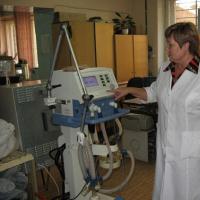 Chief metrologist job description
Chief metrologist job description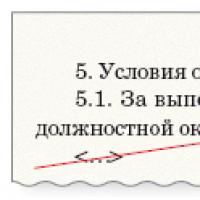 Additional payments and wage supplements: concept, features and types
Additional payments and wage supplements: concept, features and types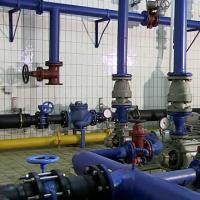 Pumping unit operator: what does he do?
Pumping unit operator: what does he do?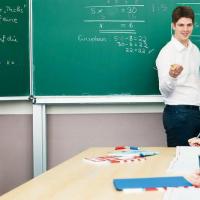 Social partnership as a factor in the accelerated development of the regional education system Social partnership in education priorities and opportunities
Social partnership as a factor in the accelerated development of the regional education system Social partnership in education priorities and opportunities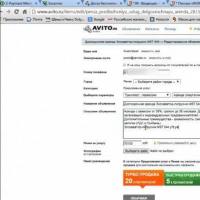 Submit an ad for free on ad ru without registration
Submit an ad for free on ad ru without registration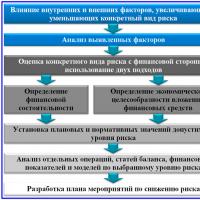 Basic Research
Basic Research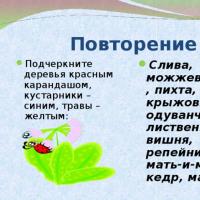 Presentation of cultivated and wild plants
Presentation of cultivated and wild plants